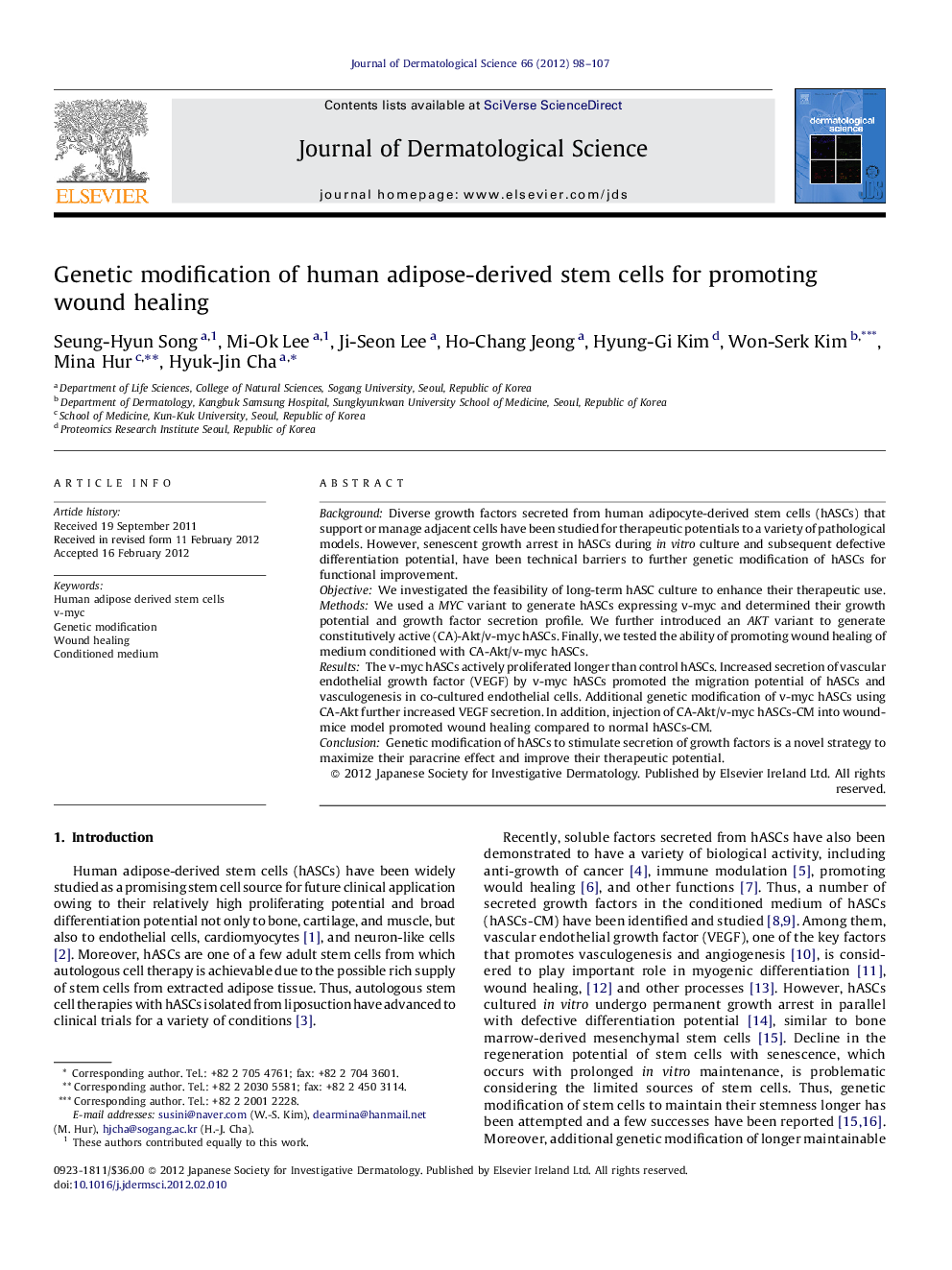| Article ID | Journal | Published Year | Pages | File Type |
|---|---|---|---|---|
| 3213435 | Journal of Dermatological Science | 2012 | 10 Pages |
BackgroundDiverse growth factors secreted from human adipocyte-derived stem cells (hASCs) that support or manage adjacent cells have been studied for therapeutic potentials to a variety of pathological models. However, senescent growth arrest in hASCs during in vitro culture and subsequent defective differentiation potential, have been technical barriers to further genetic modification of hASCs for functional improvement.ObjectiveWe investigated the feasibility of long-term hASC culture to enhance their therapeutic use.MethodsWe used a MYC variant to generate hASCs expressing v-myc and determined their growth potential and growth factor secretion profile. We further introduced an AKT variant to generate constitutively active (CA)-Akt/v-myc hASCs. Finally, we tested the ability of promoting wound healing of medium conditioned with CA-Akt/v-myc hASCs.ResultsThe v-myc hASCs actively proliferated longer than control hASCs. Increased secretion of vascular endothelial growth factor (VEGF) by v-myc hASCs promoted the migration potential of hASCs and vasculogenesis in co-cultured endothelial cells. Additional genetic modification of v-myc hASCs using CA-Akt further increased VEGF secretion. In addition, injection of CA-Akt/v-myc hASCs-CM into wound-mice model promoted wound healing compared to normal hASCs-CM.ConclusionGenetic modification of hASCs to stimulate secretion of growth factors is a novel strategy to maximize their paracrine effect and improve their therapeutic potential.
